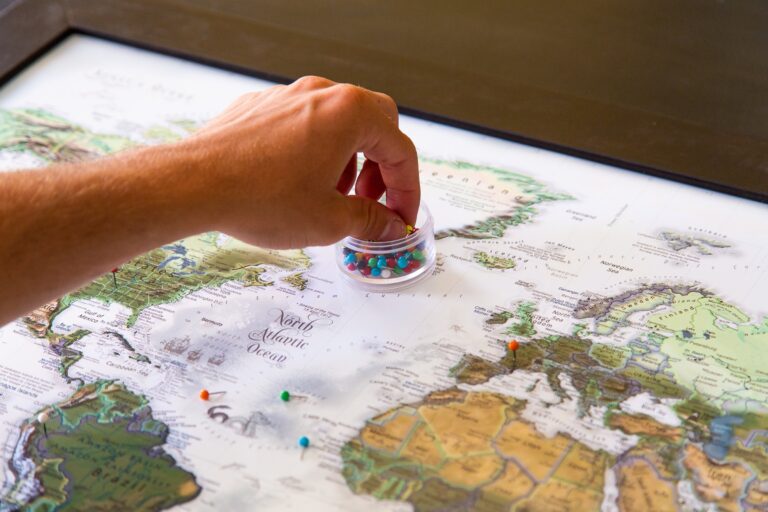Geography is a subject that is easy to teach and fun to study. All you need is a good atlas, some simple outline maps, and whatever curriculum you are already using for history and science. Science? If you’re thinking there may be an error here, let me set you straight—yes, science! You see, geography is much more than simply knowing WHERE a place is located on a map or memorizing states and capitals.
Let’s take a look at the definition as stated by the National Geographic Society:
GEOGRAPHY: A knowledge of place names, location of cultural and physical features, distribution and patterns of languages, religions and physical phenomena, such as tectonic activity, land form, climate, bodies of water, soils, and flora and fauna. The changes in places and areas through time, including how people have modified the environment. Cartographers’ tools, such as maps, instruments, graphs and statistics, are also a part of geography.
Since the study of geography has so many facets, you can easily integrate it into your current curriculum. When studying plate tectonics, erosion, volcanoes, or weather in science, pull out an outline map and let your student depict the details of what you are learning on it. Weather maps are interesting projects to develop, as are see-through layered maps made with clear plastic overhead projector sheets. Layer each sheet on top of the next with each exposing a different theme. It’s great fun to make a salt dough map of the area you are studying in history, too!
Outline maps provide practical hands-on learning experiences for your students. Here are just a few of many ideas to get you started:
- Draw explorers’ maps.
- Record Biblical events on a map of Israel or the Middle East.
- Depict world empires on maps of Europe, Ancient Civilizations, etc.
Use maps whenever possible. From making vacation plans to reading the newspaper or watching the evening news, there are always opportunities to look places up in an atlas. Seeing a place depicted on a map often improves understanding of the event about which you are learning.
Ask questions of your students to develop their skills of observation and their ability to draw conclusions. Do the physical features of the place play any role in the news event reported? What countries (or states) border the one in question? What do you suppose is the main source of water for this community? Label them on your map.
Here are some important and helpful hints to make adding a mapping assignment to your school day beneficial:
- Make sure your atlas is adequate and appropriate for the student’s level and the assignment given.
- Does your student know how to use the atlas? A quick lesson will help alleviate frustration. Often, good information on using the atlas is in the front of the atlas itself.
- Use color coding with colored pencils or colored pens to help clarify ages of history, types of mineral deposits, elevations in physical geography, etc.
- Sit with your student the first few times and encourage him or her with your help and direction.
- Allow plenty of time to get the job done right.
- Show off your student’s maps whenever possible and praise him or her for his or her efforts.
Using the National Geographic Society definition of geography to enlighten your understanding of geography, challenge yourself to find creative “geography moments” throughout the school day. Your students will have an edge in understanding world affairs as they develop a fuller knowledge of geography.
—
CINDY WIGGERS, author of the Trail Guide to Geography series, publisher, and national speaker, established the family business, Geography Matters, with her husband in 1989. As a result of homeschooling her three children, she developed a heart to help parents inspire their children with a love for learning.




